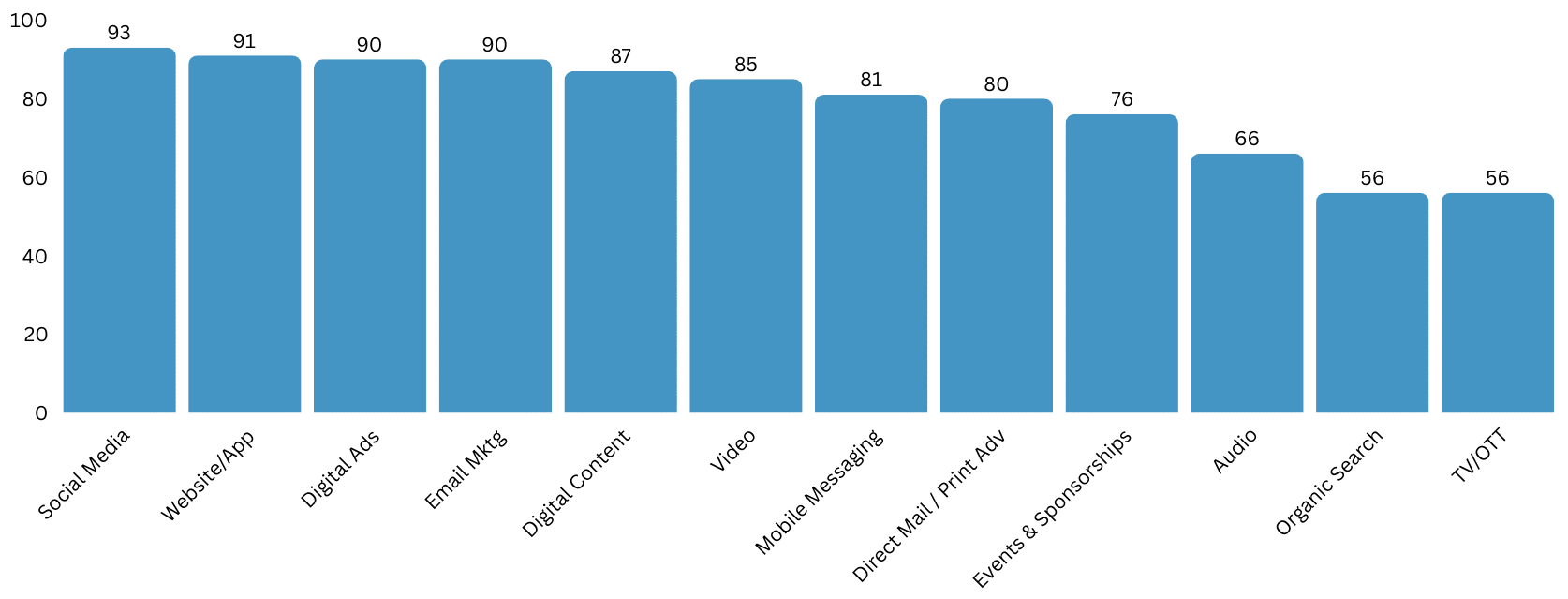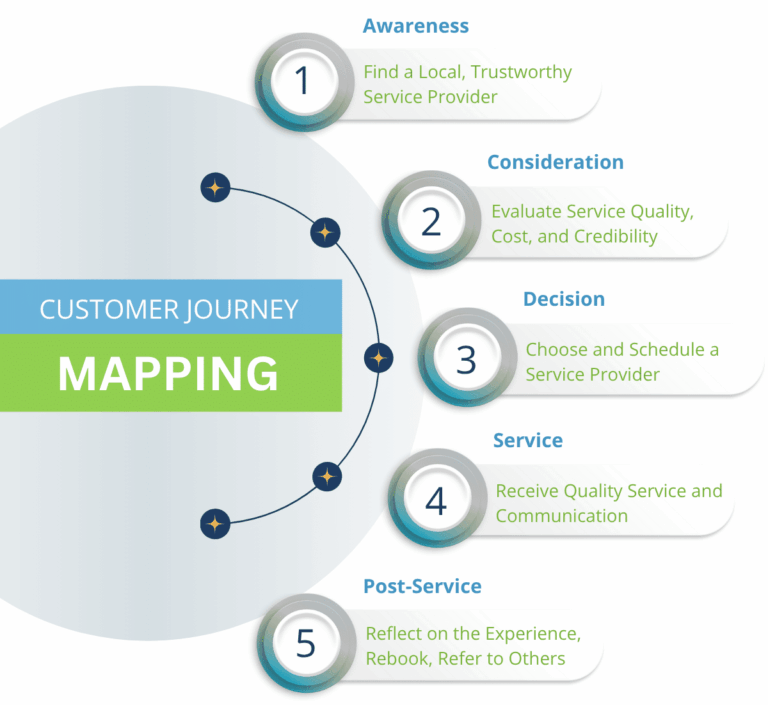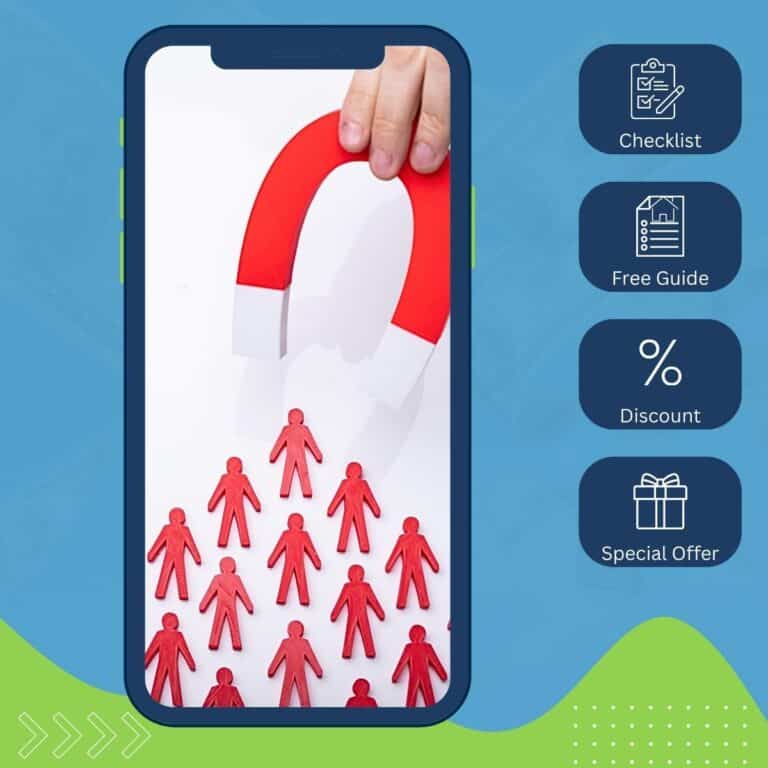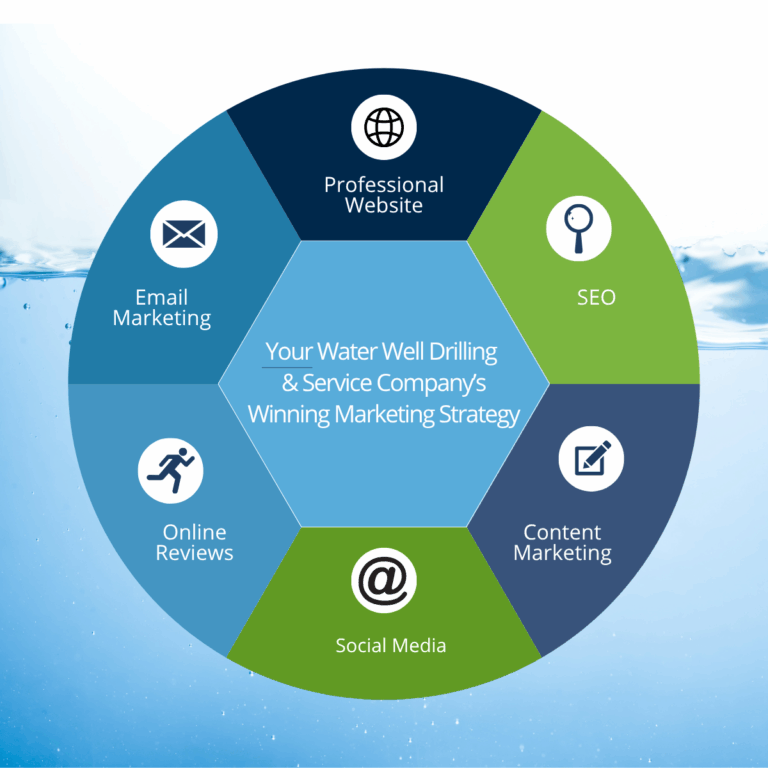
The digital landscape is undergoing a dramatic transformation in 2025, with generative AI, zero-click searches, and changing user behaviors reshaping how people discover information online.
HubSpot has published its yearly report on The State of Marketing, in which it surveyed 1,200 marketing leaders on what’s blocking and driving growth for their clients. The report highlights some of the major shifts occurring in marketing strategies, how AI is being adopted, content trends, and consumers’ changing expectations. In addition, Salesforce published its yearly State of Marketing report that showcases the latest trends in AI, data, and personalization with insights from nearly 5,000 marketers worldwide.
Here are some of the key takeaways from both reports on how marketing is evolving.
Marketing Insights from HubSpot
- AI is Reshaping Content Creation and Campaign Execution
- The Focus is Shifting to Younger Generations
- Social Responsibility is Important
- Visual Content Takes the Lead – Especially Short Form Videos
- First Party Data is a Goldmine
- Personalization Drives Sales
- Influencer Marketing Works but is Evolving
Marketing Insights from Salesforce
- AI Is Marketers’ Main Focus — and Biggest Headache
- Marketers Focus More on Their First-Party Channels
- Customer Data is Being Used to Create More Relevant Experiences
- Delivering Omni-Channel Experiences is Key
- Marketers are Struggling to Unify Customer Data
- Marketers Move to a Lifecycle Approach for Personalization
Read the full reports here: HubSpot 2025 State of Marketing / State of Marketing – Salesforce
(Source: HubSpot)
It’s time to go all in on AI
The reports reveal that AI is becoming an integral part of marketing practices, which enables marketers to automate and scale faster. Marketers are integrating AI in a number of ways, with the most prominent being the following:
- Content creation (35%)
Marketers are using AI to write blogs, ad copy, and social media posts. - Data analysis and insights (30%)
AI-driven analytics are also being utilized, giving marketers clearer overviews on how their campaigns perform, allowing them to fine-tune the campaigns accordingly. - Workflow automation (20%)
This can range from automating repetitive tasks to generating new content or insights, ultimately streamlining operations and enhancing efficiency.
(Source: Salesforce)
A Shift from More Content to Better Content
Marketers are moving their focus from increasing traffic to capturing attention. The challenge will be to use AI but keep the focus on the top 3 goals: Personalization. Authenticity. Attention. The key will be to not use AI to post more content (i.e. noise), but to use it to post better content. Knowing your audience and speaking to them on a one-on-one level will be the goal.
The Focus is Shifting to Younger Generations
Marketing efforts are increasingly being focused on younger generations, primarily Millennials and Gen Zers. Over 70% of marketers plan to target Millennials in 2025 (29 to 44 years old), making them the largest audience of decision-makers, and interest in targeting Gen Zers (13 to 28 years old) is up year-over-year.
(Source: HubSpot)
When considering where Gen Zers and Millennials most often engage online, consumption habits are different for each group. Gen Zers spend time on social media — specifically, TikTok, Instagram, and YouTube — and trust influencers for recommendations. Millennials use YouTube, Facebook, and Instagram for news, product recommendations, lifestyle advice, and education. They also regularly listen to podcasts and are often members of subscription-based services.
Social Responsibility is Important
According to Deloitte, 64% of Gen Zers and 63% of Millennials are willing to pay more for environmentally sustainable products. And one in four Gen Zers and Millennials have reduced their relationship with a business due to unsustainable practices. This generation is influenced by brand values and a commitment to the environment.
Visual Content Takes the Lead – Especially Short Form Videos
Visual storytelling is overtaking text-heavy content formats. More marketers are focusing on an attention-first strategy and are employing short-form videos (15-60 seconds) on Instagram Reels, YouTube Shorts, and TikTok. It’s becoming all about capturing attention and keeping people watching, reading, or engaging.
Social platforms reward engagement time, not just clicks. The longer people spend with your content, the more it gets pushed to new audiences.
(Source: HubSpot)
Long-form and Short-form Content are Both Important
Long-form text and videos that educate, tell stories, and are engaging build trust and establish credibility and are still highly relevant. When you provide comprehensive guides, in-depth explanations, or detailed product demonstrations, audiences are more likely to engage with the content and stay longer.
While long-form content can be powerful for in-depth engagement, short-form content (like social media posts) can be effective for grabbing attention and driving traffic.
Pro Tip: Take a piece of long-form content — such as an educational YouTube video or blog post — and remix it into shorts, Instagram Reels, and blog posts. This will enable you to extend your reach across platforms efficiently.
Podcasting is Low Hanging Fruit
The marketing industry is very bullish on podcasting. 91% are focusing on this channel and view it as very low-hanging fruit. Around 100 million Americans listen to podcasts weekly. The average adult, across all generations, listens to approximately 8 hours of podcasts each week. The riches are in the niches. Having a podcast geared towards a very specific topic is key to maximizing this opportunity.
(Source: Statista)
Influencer Marketing Works
Marketers are finding success with influencer marketing, especially those with niche audiences. In 2024, 24% of marketers reported using influencer marketing, and both B2B and B2C brands found the most success with micro influencers who have 10K – 100K followers. Working with smaller creators and influencers has allowed brands to build trust with new audiences, gain access to niche, tight-knit communities, and stretch their influencer marketing budget further.
(Source: HubSpot)
First Party Data is a Goldmine
Brands that own their customer list, rather than having to pay through ads, are seeing higher engagement rates. Many marketers are using this data to map out target audiences’ pain points, goals, and preferences. This data is a goldmine for understanding what drives buyer behavior and marketing accordingly.
Delivering Omni-Channel Experiences
On average, consumers engage with companies across 8 channels. With diverse touchpoints, consolidating and synchronizing data becomes increasingly complex, leading to fragmented experiences instead of seamless access to the benefits that customers expect.

Personalization Drives Sales
What constitutes a “personalized experience” continues to mature, and there’s a stark difference between how the highest- and lowest-performing marketing teams adapt. On average, high performers fully personalize across six channels, compared with underperformers who fully personalize across three. Instead of selling, the focus of top marketers has shifted to educating, engaging, and entertaining customers.
(Source: Salesforce)
Marketers Move to a Lifecycle Approach for Personalization
Marketers are moving to a lifecycle approach for personalization. Businesses have long struggled to connect disparate data points to create consistent, personalized experiences across customer journeys. Creating a unique brand experience requires ongoing, targeted engagement throughout the customer journey. This can be particularly challenging during early stages, when less customer data is available. Such constraints could explain why marketers are more likely to personalize content for established customers than onboarding materials for newcomers.

Unifying Customer Data
With every click and conversation, customers and prospects leave behind a trail of digital breadcrumbs. Eager to make the most of every interaction, marketers deploy a wide variety of tactics to collect clues for better audience understanding. Marketers are patching together a connected view of their customers and taking a full-funnel approach to data.
There is no shortage of data sources, but putting that data to work is a challenge. The modern marketer’s challenge isn’t a lack of first-party data: it’s fully integrating this data across departments to glean insights, plan campaigns, and suppress messages from reaching the wrong audiences,
Fully integrated data is more common among high performers, suggesting that investing in the right tools can pay off and investing in unification can give marketers an edge.
What About Organic Search?
While AI tools are gaining popularity, Google remains the dominant player for information discovery online, with YouTube (also owned by Google) ranking as the second largest search engine globally.
What has changed, however, is how users interact with search results. Zero-click searches are increasing as Google displays more information directly in search results through AI overviews and featured snippets. But this doesn’t necessarily mean less traffic to websites overall.
While the percentage of zero-click searches has increased, the total volume of searches has grown even faster, resulting in more traffic to websites than ever before. Nearly half of marketers have noticed that consumer use of AI for search has already impacted their search traffic — positively. AI overviews are primarily disrupting informational searches rather than commercial or transactional queries. This is a crucial distinction for businesses concerned about losing traffic.
The data clearly shows that organic search remains a vital channel for businesses in 2025. However, the approach to SEO must evolve to account for AI advancements, changing user behaviors, and new search platforms.
(Source: HubSpot)
Are you ready to take your company to the next level? Contact us for a free digital marketing audit and strategy session.

About the Author
Katie Wilson, Owner
Aspire ID is a small digital marketing company in Denver, Colorado. Our mission is to empower business growth through superior digital marketing solutions and to build long-lasting client relationships. Since 2002, Katie and her team have helped home service businesses throughout the U.S. consistently grow and generate leads by providing best-in-class web design, SEO, PPC, content marketing, social media management, and reputation management and deploying targeted online marketing strategies driven by clear objectives.






